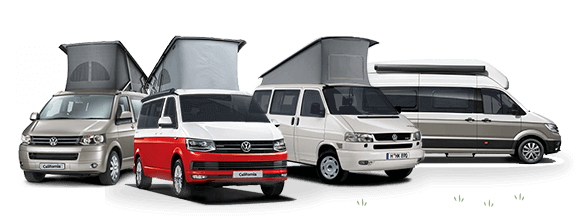soulstyledevon
Kennycalifornia
Super Poster
VIP Member
- Messages
- 6,287
- Vehicle
- Cali now sold
Or an old favourite...
Anyone ordering 4motion needs to watch this.
Because, I’m sure it would convince most that the diff-lock is worth having...
Buy all your VW California Accessories at the Club Shop Visit Shop
Or an old favourite...
There is also the risk that over use or misuse of the Diff lock can cause mechanical failure of the Diff or drivetrain component.
I don't have it and not needed it or even nearly needed it.
It could be argued that common sense wouldn't put a Cali into an area that getting bogged down was probably going to be the outcome.
Not completely correct...It has to be quite a dramatically uneven terrain where a front wheel lifts up and you could only proceed, if you could not carry any momentum, by engaging the diff. lock.
Afraid that is not the case, because there is no centre diff lock so any wheel spinning takes all the power so on its own (without EDC) it is no better that 2WD apart from in on road situations. (ready for the flood of abuse here!). One wheel in the air, or even on wet grass, is enough to put the 4motion to make it necessary to use excessive speed to get out of a sticky situation.Also no expert but trying to gain a better understanding before too late to add to my order If justified. From what I can work out it would actually only be needed if a wheel on each axle loses traction, so 2 in the air or otherwise compromised for grip. If just front wheel then drive would transfer to rear, if a rear wheel also lost grip then you’d need to then lock rear diff to go anywhere. Am I on the right track, or missing something?
there is no centre diff because of the haldex on the rear and the fact that all 4motion vehicles are primarily FWD. Centre diff is typical for RWD vehicles with an option to make them FWD through an additional driveshaft. The Skoda system you describe is a haldex on the rear axle being partially engaged. Cars like the golf R use a partial engagement of the haldex to provide something closer to 50/50 bias. Equally changing the throttle response limits the chance of wheelspin to provide control electronically.I ordered a 4motion to give Better traction on the road when wet, cold and snowy. for most U.K. owners there’s not much ground you can legally drive onto that requires a diff lock, I’d rather spend 750 quid on second set of wheels and tyres.
Also what I don’t understand is why there is no electronic centre diff?
We have a 2015 skoda Octavia estate all wheel drive, there’s a button on the dash you can press and it optimises the all wheel drive drivetrain even more, by splitting drive, to the front and rear, reduces the throttle response and adjusts the abs system, etc, the max speed is 30 kph for all this to work.
Odd the 4Motion hasn’t got this type of system
Switch off ESP when in a difficult situation, so all the on-road scenario's in the software don't kick in (so it won't think you are aquaplaning or spinning on a wet and slippery road or something, and reduce traction when you actually want it, etc), and you'll be surprised...One wheel in the air, or even on wet grass, is enough to put the 4motion to make it necessary to use excessive speed to get out of a sticky situation.
4motion is designed for on road scenarios, so in the instance where there is a loss of traction on the front wheels causes spin, power is sent to the rear through the haldex clutch and reduces spin. Same scenario in towing where the front wheels are light, more power goes automatically to the rear to aid traction.
When you get into a scenario when one wheel lifts, the system will try to use the brakes to stop power being lost through the spinning wheel (6:23 in the video in post 24). You will get a lot of wheel spin before the system kicks in, and it will start and stop again each time you change throttle position.
And that goes for 2 wheel drive alsoSwitch off ESP when in a difficult situation, so all the on-road scenario's in the software don't kick in (so it won't think you are aquaplaning or spinning on a wet and slippery road or something, and reduce traction when you actually want it, etc), and you'll be surprised...
That's the first thing they teach you in a 4M off-road training: switch off ESP!
Not quit correct. 4Motion is predominantly RWD at start up.there is no centre diff because of the haldex on the rear and the fact that all 4motion vehicles are primarily FWD. Centre diff is typical for RWD vehicles with an option to make them FWD through an additional driveshaft. The Skoda system you describe is a haldex on the rear axle being partially engaged. Cars like the golf R use a partial engagement of the haldex to provide something closer to 50/50 bias. Equally changing the throttle response limits the chance of wheelspin to provide control electronically.

It’s not a Torsen it’s Haldex. That reads like a description of the Touareg centre diff (Torsen).Not quit correct. 4Motion is predominantly RWD at start up.
Permanent 4MOTION
All-wheel drive is engaged whether you’re on or off-road. In normal circumstances, the Torsen differential distributes power 40:60 between the front and rear wheels, but when off-road, the system automatically distributes power to the wheels with the most grip. When combined with other systems such as Hill Start and Hill Descent Control, you’ll find your vehicle virtually unstoppable.

4MOTION All-Wheel-Drive Technology | VW Vans
Explore the Volkswagen’s 4MOTION technology, designed to maintain traction while off-road with improved road holding and safety in poor surface conditionswww.volkswagen-vans.co.uk
This explains it from VW. Front wheel drive except when it isn’t.Not quit correct. 4Motion is predominantly RWD at start up.
Permanent 4MOTION
All-wheel drive is engaged whether you’re on or off-road. In normal circumstances, the Torsen differential distributes power 40:60 between the front and rear wheels, but when off-road, the system automatically distributes power to the wheels with the most grip. When combined with other systems such as Hill Start and Hill Descent Control, you’ll find your vehicle virtually unstoppable.

4MOTION All-Wheel-Drive Technology | VW Vans
Explore the Volkswagen’s 4MOTION technology, designed to maintain traction while off-road with improved road holding and safety in poor surface conditionswww.volkswagen-vans.co.uk
Having lived in Africa, I’d take my 4Motion Ocean (with diff-lock) to the Sahara or Serengeti before I’d put it on most beaches or in the oceanCalifornia models are called Beach, Coast, Ocean. Not Sahara, Serengeti, Safari or Rainforest. Could that be a hint ?
The problem is, you can’t upgrade from no diff lock to a diff lock. So if specifying from new and you have any intention of going off the beaten track, it makes sense to me to go for a diff lock. As you say, there are lots of options for lifting suspension and protecting the vulnerable underbelly and fitting suitable tyres after purchase if you need them.I am not an off-road expert, but it seems clear that a diff lock is needed when a wheel has completely no traction spinning off the ground. It has to be quite a dramatically uneven terrain where a front wheel lifts up and you could only proceed, if you could not carry any momentum, by engaging the diff. lock.
Before I would venture in such terrain, I would personally upgrade suspensions and tyres before thinking about diff lock.
Useful thanks, seems to be plenty of different understandings on how 4Mo works, but I still don’t get this statement. If a front wheel slips (within 45 degrees of rotation), drive goes at least partially to the rear so as long as both rear wheels have grip then you would have drive. EDL kicks in to brake a wheel (or both spinning wheels if a rear also loses grip) down the line.Afraid that is not the case, because there is no centre diff lock so any wheel spinning takes all the power so on its own (without EDC) it is no better that 2WD apart from in on road situations. (ready for the flood of abuse here!). One wheel in the air, or even on wet grass, is enough to put the 4motion to make it necessary to use excessive speed to get out of a sticky situation.
Useful thanks, seems to be plenty of different understandings on how 4Mo works, but I still don’t get this statement. If a front wheel slips (within 45 degrees of rotation), drive goes at least partially to the rear so as long as both rear wheels have grip then you would have drive. EDL kicks in to brake a wheel (or both spinning wheels if a rear also loses grip) down the line.
This is the best reference I can find on it, which is pretty clear. It’s old but still seems to cover current 4Mo set up.
yes, but diff lock also forces a power split 50/50 front to rear when engaged (albeit through the electrics).The Diff Lock only locks the rear axle ie the 2 rear wheels turn at the same rate continuously, this relies on one wheel being on a surface which has traction, no benefit if both wheels have no traction, on sheet ice as an extreme example.
It has no action on the front axle or the transfer of power between front and rear axles.
The 4M does all other actions.
The VW California Club is the worlds largest resource for all owners and enthusiasts of VW California campervans.

